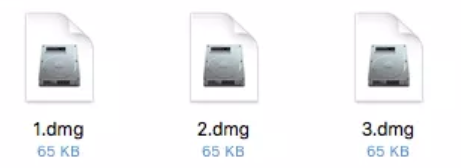For Mac users and those who work with Mac users, you may be no stranger to the DMG file format. Do you know what it is, how to open it, and create it? This article by SwifDoo PDF offers an answer.

What Is a DMG File
DMG is an Apple Disk Image file. DMG files are commonly used to store compressed software installers in macOS. This format supports compression, file spanning, and encryption. It supports 128-bit and 256-bit AES encryption for password-protected compressed folders.
macOS uses DMG files to ensure downloaded files are intact and unaltered. They contain a checksum for verification, and their compressed format helps keep download sizes smaller.
How to Open a DMG File
To open a DMG file on a Mac, double-click it. Then, the DiskImageMounter utility will verify and mount the virtual disk, making it accessible on your desktop and in Finder windows. You can then run the application by double-clicking its icon in Finder or by dragging it to the Applications folder and running it from there.
On Windows, DMG files can be opened with 7-Zip to view their contents, but you cannot run the software contained in them. To use the software on Windows, you'll need to download the Windows version instead of the Mac DMG version.
How to Create a DMG File
To create a DMG file, do the following:
Step 1: Open Disk Utility and go to File > New Image > Image from Folder.
Step 2: Select the file folder you want to encrypt and click the Choose button.
Step 3: Configure additional options such as file location and encryption settings. When encrypting, your Mac will prompt you to enter your password twice.
By default, the DMG file is read-only. To make it read-write, change the Image Format option from Compressed to Read/Write.
When you open your new DMG file, you'll be prompted to enter the password you chose. After that, the DMG file will mount like any other.
- Do I have to keep DMG files on my Mac?
No, you don't have to keep that. DMG files are used to help download third-party apps from the internet. After downloading and installing the apps on your device, they become useless and are considered junk files.





